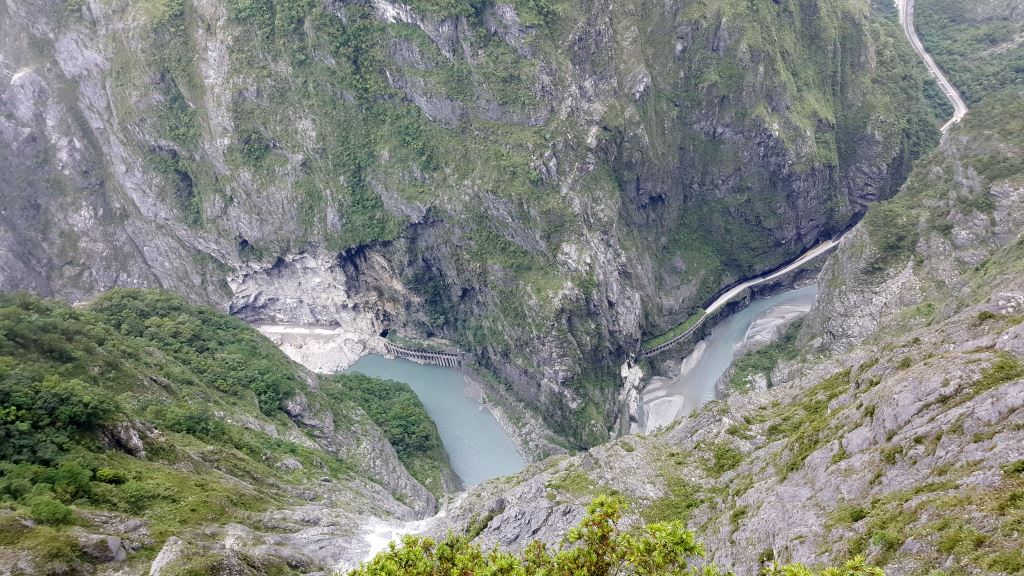The Culture and History of Taroko

The Main Reading Text
Long before Taroko became a national park, it was home to the Truku people (太魯閣族). The Truku are one of Taiwan's indigenous groups, meaning they are the original people who have lived in this mountainous area for a very long time. Their culture is deeply connected to the land, its rivers, and its forests. Visitors can learn about the unique traditions, crafts, and way of life of the Truku people. A good place to start is the Buluowan Terrace (布洛灣遊憩區). Buluowan is a wide, flat area on a hillside where you can find exhibits and sometimes performances related to Truku culture. There is also a small museum that offers more information.
The park's history also includes more recent stories of human effort and change. One of the most significant features is the Central Cross-Island Highway (中部橫貫公路). This road winds its way through the narrow and steep Taroko Gorge, a deep valley with high rock walls. Building this highway was an extremely difficult and dangerous job, completed many years ago by brave workers.
To honor and remember the workers who lost their lives during the construction of this challenging road, the Eternal Spring Shrine, also known as Changchun Shrine (長春祠), was built. This beautiful shrine is set into the mountainside, with waterfalls flowing beneath it. It serves as a powerful reminder of the sacrifices made to connect the eastern and western parts of Taiwan. These historical sites, along with the stories of the Truku people, show that Taroko Gorge is a place where nature, culture, and history meet.
Key Learning Points
點擊下方的頁籤,切換不同的學習重點。
indigenous
a.[ɪnˋdɪdʒənəs] — 原住民的;本土的
Naturally existing in a place or country rather than arriving from another place; native.
- The Truku are one of Taiwan's indigenous groups.
太魯閣族是台灣的原住民族群之一。 - The kiwi bird is indigenous to New Zealand.
奇異鳥是紐西蘭的原生鳥類。
tradition
n.[trəˋdɪʃən] — 傳統
A belief, principle, or way of acting that people in a particular society or group have continued to follow for a long time.
- Visitors can learn about the unique traditions of the Truku people.
遊客可以學習太魯閣族獨特的傳統。 - It is a family tradition to eat dumplings on New Year's Eve.
在除夕夜吃餃子是個家庭傳統。
exhibit
n.[ɪgˋzɪbɪt] — 展覽;陳列品
An object that is shown to the public in a museum, gallery, etc.
- You can find exhibits related to Truku culture.
你可以找到與太魯閣文化相關的展覽。 - The museum has a new exhibit on dinosaurs.
博物館有一個關於恐龍的新展覽。
significant
a.[sɪgˋnɪfəkənt] — 重要的;顯著的
Important or noticeable.
- One of the most significant features is the highway.
其中一個最重要的特色是這條公路。 - There has been a significant increase in sales.
銷售額有了顯著的增長。
construction
n.[kənˋstrʌkʃən] — 建造;建設
The process of building things such as houses, bridges, roads, etc.
- Workers lost their lives during the construction of this road.
工人們在這條路的建設過程中喪生。 - The new hotel is still under construction.
新飯店仍在施工中。
shrine
n.[ʃraɪn] — 祠堂;聖地;神社
A place for worship that is holy because of a connection with a holy person or object.
- The Eternal Spring Shrine was built to remember the workers.
長春祠是為了紀念這些工人而建的。 - Many people visit the shrine to pray.
許多人到這座祠堂祈禱。
sacrifice
n.[ˋsækrə͵faɪs] — 犧牲
The act of giving up something that is valuable to you in order to help another person.
- It's a reminder of the sacrifices made to connect Taiwan.
它提醒著人們為連接台灣所做的犧牲。 - Parents often make sacrifices for their children.
父母時常為他們的孩子做出犧牲。
... where you can ...
句型一個你可以...的地方
這是一個由關係副詞 `where` 引導的形容詞子句,用來修飾前面的地點名詞,說明在那個地方可以做什麼事。
- Buluowan is an area where you can find exhibits.
布洛灣是一個你可以找到展覽的地方。 - This is the park where we used to play.
這就是我們以前常玩的那個公園。
Building ... was ...
句型建造...是...
使用動名詞 (Gerund) `Building` 作為句子的主詞,來談論「建造這件事」。這是一種將動作名詞化的常見方式。
- Building this highway was an extremely difficult job.
建造這條公路是一項極其困難的工作。 - Learning a new skill takes time and patience.
學習一項新技能需要時間和耐心。
To V..., S + V...
句型為了要...,於是...
這是不定詞片語 (`To + V`) 置於句首的用法,用來清楚地說明後面主要子句的「目的」或「原因」。
- To honor and remember the workers, the shrine was built.
為了尊敬與紀念這些工人,這座祠堂被建造了起來。 - To get a good grade, you need to study hard.
為了得到好成績,你需要努力讀書。
不定詞表目的 (Infinitive of Purpose)
文法To + V for Purpose
我們可以使用不定詞 (`to + 原形動詞`) 來回答「為什麼」做某件事,也就是說明動作的目的。這個不定詞片語可以放在句中或句首。
- To honor and remember the workers, the Eternal Spring Shrine was built.
(句首)為了尊敬與紀念這些工人,長春祠被建造了起來。 - The shrine was built to honor and remember the workers.
(句中)長春祠被建造是為了尊敬與紀念這些工人。 - Sacrifices were made to connect the eastern and western parts of Taiwan.
(句中)人們做出犧牲是為了連接台灣的東部與西部。
long before
片語早在...之前
指在某個事件或時間點的很久以前。
- Long before Taroko became a national park, it was home to the Truku people.
早在太魯閣成為國家公園之前,它就是太魯閣族的家園。
home to
片語...的家園;...的所在地
指某個地方是某些人或動植物的居住地。
- Taroko was home to the Truku people.
太魯閣是太魯閣族的家園。 - This forest is home to many rare birds.
這片森林是許多珍稀鳥類的家園。
way of life
片語生活方式
指某個個人、群體或社會的典型生活模式、習慣和習俗。
- Visitors can learn about the way of life of the Truku people.
遊客可以學習太魯閣族的生活方式。
lost their lives
片語喪生;失去生命
是 `died` (死亡) 的一種比較委婉和正式的說法,常用於描述在意外或災難中去世。
- ...workers who lost their lives during the construction...
...在建設過程中喪生的工人們...
serves as
片語作為...;充當...
指某物具有某種功能或扮演某種角色。
- It serves as a powerful reminder of the sacrifices.
它作為一個對那些犧牲的有力提醒。
Countable Nouns
名詞分類可數名詞
指可以被計數,並且有單數和複數形式的名詞。
park, home, group, people, area, time, land, river, forest, tradition, craft, way, life (lives), visitor, place, terrace, hillside, exhibit, performance, museum, story, effort, change, feature, highway, road, gorge, valley, wall, job, worker, shrine, mountainside, waterfall, reminder, sacrifice, part, site.
Uncountable Nouns
名詞分類不可數名詞
指無法直接計數,通常沒有複數形式的名詞。
culture, information, history, nature, construction.
| 原形 (Present) | 過去式 (Past) | 過去分詞 (Past Participle) |
|---|---|---|
| be (is/are) | was / were | been |
| become | became | become |
| build | built | built |
| complete | completed | completed |
| connect | connected | connected |
| find | found | found |
| flow | flowed | flowed |
| learn | learned / learnt | learned / learnt |
| live | lived | lived |
| lose | lost | lost |
| meet | met | met |
| show | showed | shown / showed |
| wind | wound | wound |
